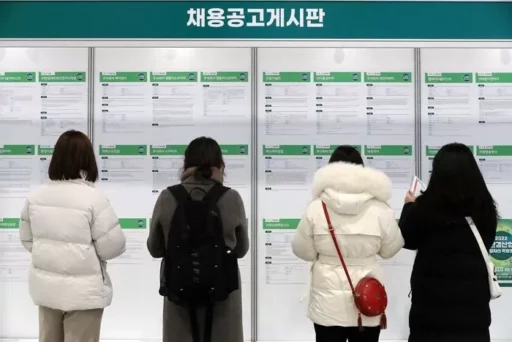Dangerous Deliveries Amidst Heavy Rain: A Structural Issue, Not Individual Recklessness
On July 17th, when more than 400mm of 'monster rain' poured down in Gwangju in just one day, the sight of a delivery rider navigating through waist-deep water while carrying out their delivery duties garnered significant attention on social media.
The delivery rider described their actions as "doing my best to get the job done," but pointed out that the underlying cause of such a situation is "not individual recklessness but a structural problem."
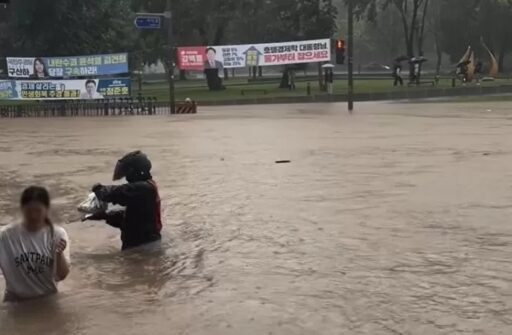
According to an online community on the 5th, a person operating a salad shop in Gwangju shared a post on their social media claiming, "I am looking for the legendary rider who came to pick up the delivery when the water reached waist-height at 5 PM on July 17," along with a video.
The video, apparently taken from CCTV in front of the store, captured the delivery rider crossing a flooded road to pick up food.
In the video, the delivery rider parked their motorcycle on the opposite side of the road, then headed toward the store, wading through waist-deep water.
The staff at the store handed over the food, which was kept in plastic bags, to the rider in the deep water, and the rider crossed back through the dangerous waterway, holding a cellphone in one hand and the packaged food in the other.
Despite several moments of near-stumbling, the rider successfully made it back across the road to their motorcycle.
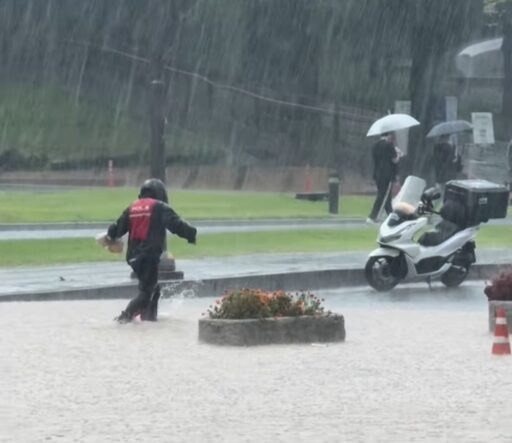
Risking Delivery Amid Record Rain
At the time, Gwangju recorded 426.4mm of rain over one day, marking the highest rainfall for July since weather observations began.
This led to significant rises in water levels in the Yeongsan River, Sotaecheon, Gwangjucheon, and Seobangcheon, resulting in two people going missing and damages caused by flooding.
After the video gained attention, the shop owner, A, provided additional explanations about the situation.
Initially, rainwater flooded the store, but after the water receded, they resumed delivery operations. However, after stepping away briefly, heavy rains fell again within just 20 to 30 minutes, causing another flood in the shop.
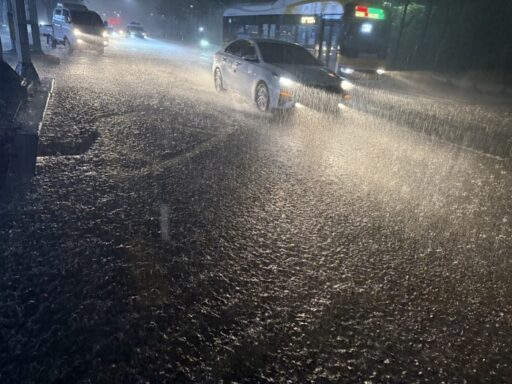
A began canceling delivery orders that had come in, but the delivery rider for an order that had already been placed arrived on the opposite side of the road.
B, who identified himself as the rider featured in the video, commented that "due to road flooding and closures, it was impossible to travel by motorcycle, so I had no choice but to cross the road that had water up to my waist," explaining, "The current was so strong that if I lost focus, I could be swept away. The police also advised against crossing, but I crossed again to deliver food to the customer."
B also responded to criticisms of acting recklessly, stating, "I took the call without knowing the road was flooded," and clarified that he accepted the call believing the road was clear as he had seen the water recede and the cleaning taking place firsthand.
When he arrived on-site, the road was suddenly submerged once again, and given that he had already accepted the call from far away, he felt he could not abandon the delivery.
Pointing Out Structural Issues of the Platform
B identified the underlying cause of such situations as structural problems within delivery platforms.
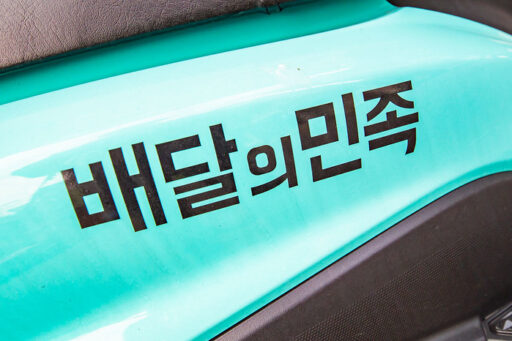
He emphasized, "Calls are still assigned even in dangerous situations, and there is a penalty for cancellations," saying, "I hope you can also consider the realities faced by riders working under such a structure."
He acknowledged, "I know that this behavior should not have life-threatening consequences, but we still strive to do our best between the platform and the customers," and added, "I hope this video is not consumed merely as a sensational news piece."
As unexpected heavy rains, snow, and heat due to climate change have become more frequent, the working environment of delivery riders has become an important topic of social discussion.
Delivery platforms charge surcharges for delivery fees during bad weather, provide notices that deliveries may be delayed in adverse weather conditions, and even reduce delivery service areas during severe weather.
However, many delivery riders express that "as delivery fees decrease, they have no choice but to take risks even when the weather worsens."
For example, Baedal Minjok reduced the basic delivery fee from 3,000 KRW to 2,500 KRW in April and extended the distance for the basic delivery fee from 675m to 1,400m.
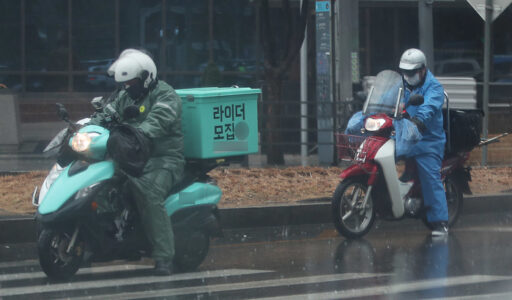
This situation has raised concerns that riders are forced to take on excessive deliveries to earn a minimal income.
According to a survey conducted by the Rider Union in November last year involving 278 riders, 71% of respondents reported that "working hours have increased compared to last year," while 90% stated that "earnings have decreased."
Among these, 44.2% reported a decrease in monthly income of approximately 610,000 KRW to 900,000 KRW. Additionally, 79.6% of respondents indicated that they would work during adverse weather conditions, such as rain or snow, for higher fares.
Image source: Instagram 'gloforok'. On the 3rd, vehicles passing through Unnam-dong, Gwangsan-gu, Gwangju, are moving slowly amid a heavy rain warning. / News1, Photo = Insight, Reference photo for understanding the article / News1.


